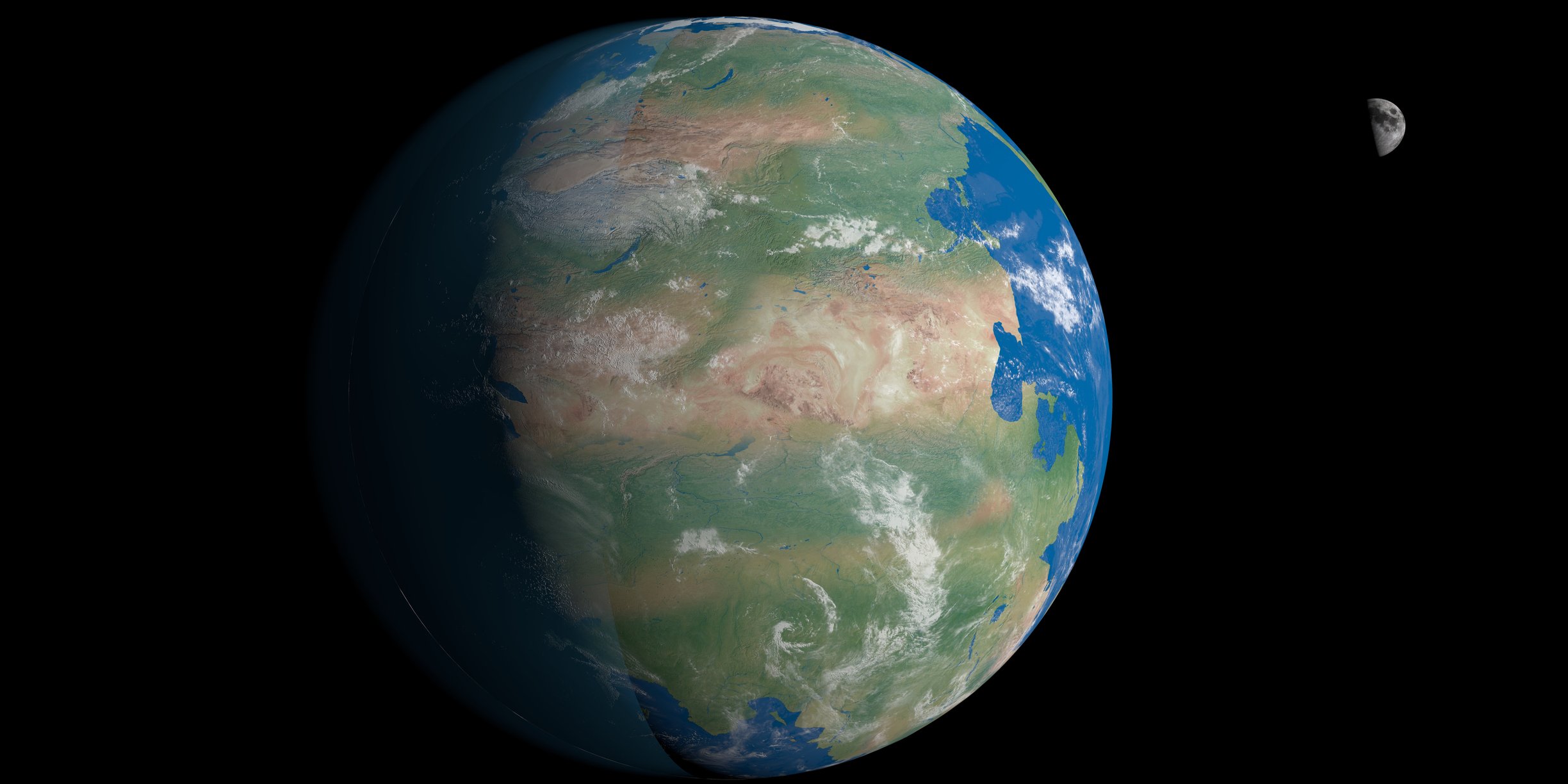Between 320 million and 195 million years ago, continents as we know them did not exist on Earth; In fact, the planet consisted of a single huge continent; There wasn’t even the first human at that time. This supercontinent called Pangea did not consist of four oceans, there was only one large ocean called Panthalassa..
It was a landmass adjacent to Africa, as well as North America, South America and Europe. But it’s important to remember that this isn’t Earth’s only supercontinent; after all, the planet was born more than 4.5 billion years ago.
Before Pangea, Our celestial body was home to other supercontinents known as Rodinia and Columbia (Numa). While some scientists argue that Gondwana is also a supercontinent, others claim that it is not possible to put it in this category.
“Pangaea was a supercontinent at the beginning of geological time that encompassed nearly all of the land mass on Earth. Pangea was surrounded by a global ocean called Panthalassa and was fully formed by the early Permian Period (about 299 million to about 273 million years ago). The supercontinent began to break up about 200 million years ago, during the Early Jurassic Period (201 to 174 million years ago), eventually forming the modern continents and the Atlantic and Indian Oceans,” the encyclopedia Britannica explains:
Supercontinents, like our own continents, were formed due to the movement of tectonic plates, causing cracks and massive displacements in the region. Although it is an extremely violent process of nature, scientists argue that it is what has driven the evolution of the planet over billions of years.
How did the supercontinent Pangea shape the Earth?
Pangea was first mentioned by German geologist, geophysicist and meteorologist Alfred Lothar Wegener when he proposed the idea that a supercontinent existed before the modern Earth. The scientist explained his theory to the scientific community in 1915 when he published the first edition of his book ‘The Origin of Continents and Oceans’. He was the first to suggest that all continents were connected to each other in the past.
One of the first clues discovered by Wegener was the realization that the shape of all the continents fit together perfectly, almost like a world map puzzle.
Moreover, Earth’s geological record also supports this concept, as scientists have already found numerous similar geological examples in different regions. For example, coal deposits have been found in the United States with a composition similar to other examples found in Poland, Germany, and England.
Pangea began to transform into the continents we know today due to the triple continental rift that emerged between Africa, South America and North America. The crack started after the crust weakenedWhen magma emerges and forms a type of volcanic fissure in the area.
From there the division of continents gradually grew until the Atlantic Ocean was formed. However, this did not happen all at once, as Pangea split several times.
150 million years ago Gondwana began to separate from Laurasia (Eurasia and North America), forming what we know as Africa, South America, Antarctica, India and Australia. About 60 million years ago it was time for North America to separate from Eurasia (Europe and Asia).
The future of the world’s continents
Just as Earth has moved through other continental configurations, the planet is unlikely to remain in its current form forever. Probably millions of years from now, the Earth’s continents will be in different positions, and even new masses will form to form other continents.
Currently, scientists have managed to detect that Australia is slowly moving towards the Asian region; Another observation is that the eastern part of Africa is gradually separating from the rest of the continent. Anyway, It is important to emphasize that these small changes are imperceptible to the eyes of humanity..
“A new supercontinent will form 250 million years from now. Supercontinents stay together for about 100 million years; This is part of the exaggeration in their equations. Moreover, expansion rates vary widely, from about 1 cm per year at the slowest (Gakkel Ridge, Arctic Ocean) to 15 cm per year (Eastern Pacific Ridge). , Ted Nield.
In a study published in the scientific journal Gondwana Research, a team of researchers suggests that: The formation of supercontinents is a periodic phenomenon that occurs every 750 million years. The majority of the scientific community believes that this cycle is primarily due to the dynamics of the Earth’s mantle.
Did you like the content? Stay up to date with more curiosities about Pangea at TecMundo. If you wish, have the opportunity to watch the 1 billion year old tectonic plate displacement on video.
Source: Tec Mundo
I’m Blaine Morgan, an experienced journalist and writer with over 8 years of experience in the tech industry. My expertise lies in writing about technology news and trends, covering everything from cutting-edge gadgets to emerging software developments. I’ve written for several leading publications including Gadget Onus where I am an author.













